Art Collectors
‘We Wanted Stonehenge’: How Philanthropists Cathy and Peter Halstead Built a Sprawling Sculpture Park in the Montana Wilderness
Tippet Rise Art Center features works by Alexander Liberman, Louise Nevelson, Ai Weiwei, Wendy Red Star, and more.
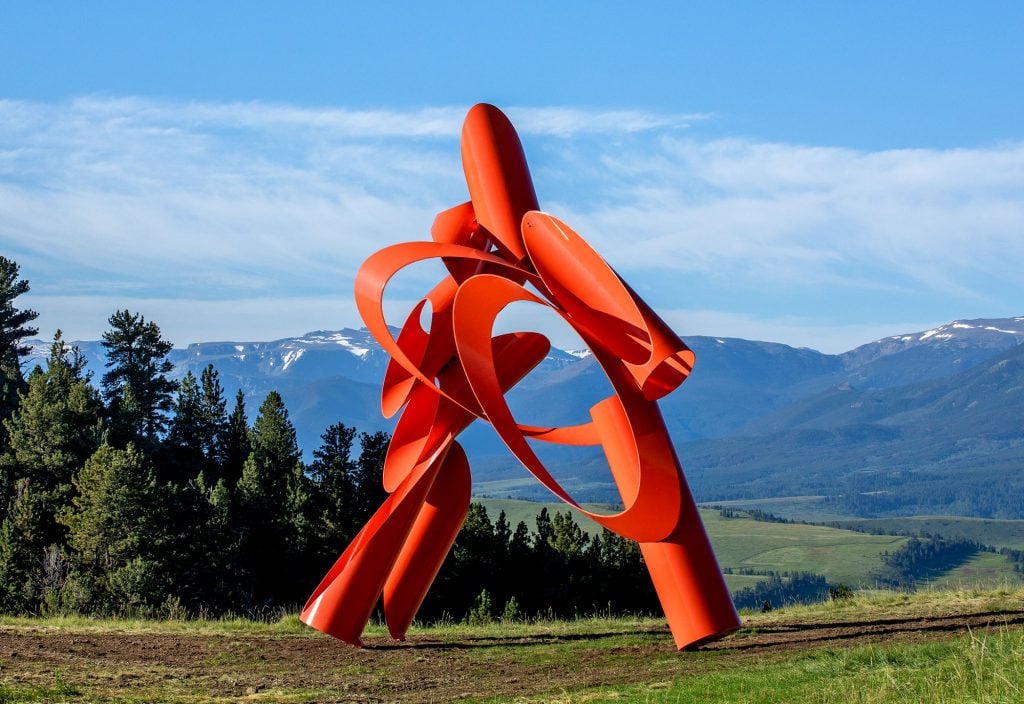
Imagine this: you’re in a cozy music venue enjoying live recitals by some of the world’s greatest virtuosos. As you find yourself entranced by the sonatas of Mozart, Lizst and Haydn, a large Alexander Calder mobile, Stainless Stealer (1966), on loan from the Hirshhorn Museum, hangs above. Two Stephen Talasnik wall sculptures, Archaeology (2012) and Galaxy (2014), flank the stage.
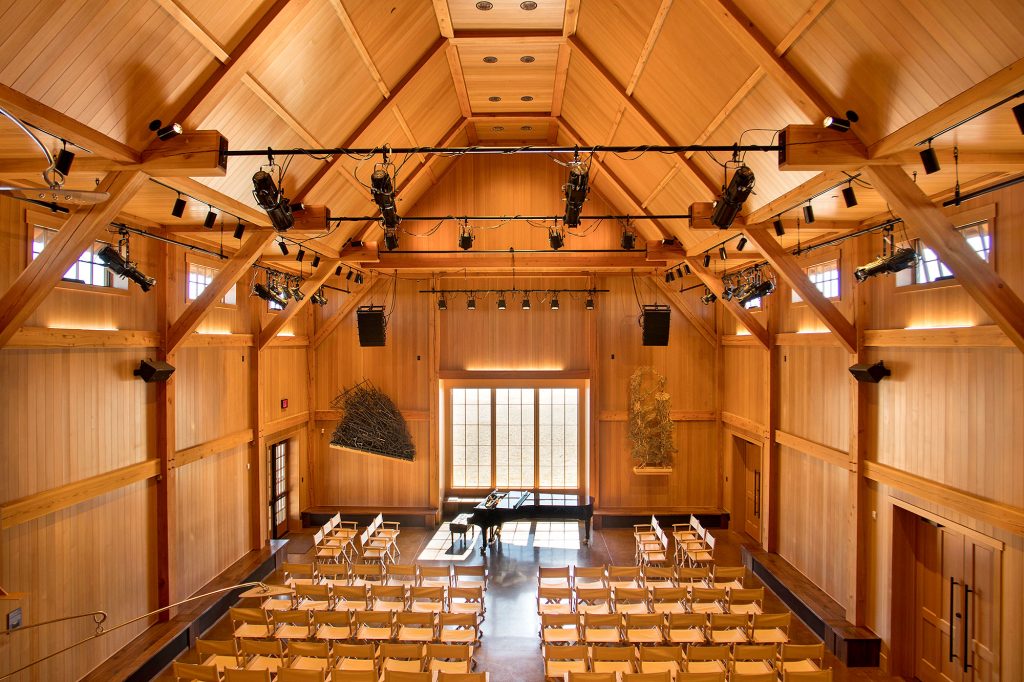
Interior of the Olivier Music Barn. Photo: Erik Petersen. Courtesy of Tippet Rise.
You feel enveloped in culture’s embrace, while through a window behind the piano you observe still more art: Ai Weiwei’s Iron Tree (2013), rusted from years of dutiful open-air service. Next to those 99 solid iron branches, you spot cows grazing among bales of hay, while in the distance rise jagged, snow-capped mountains. At that point you remember that the venue you’re sitting in is a barn, on a ranch, near a town called Fishtail, deep in the wilds of Montana.
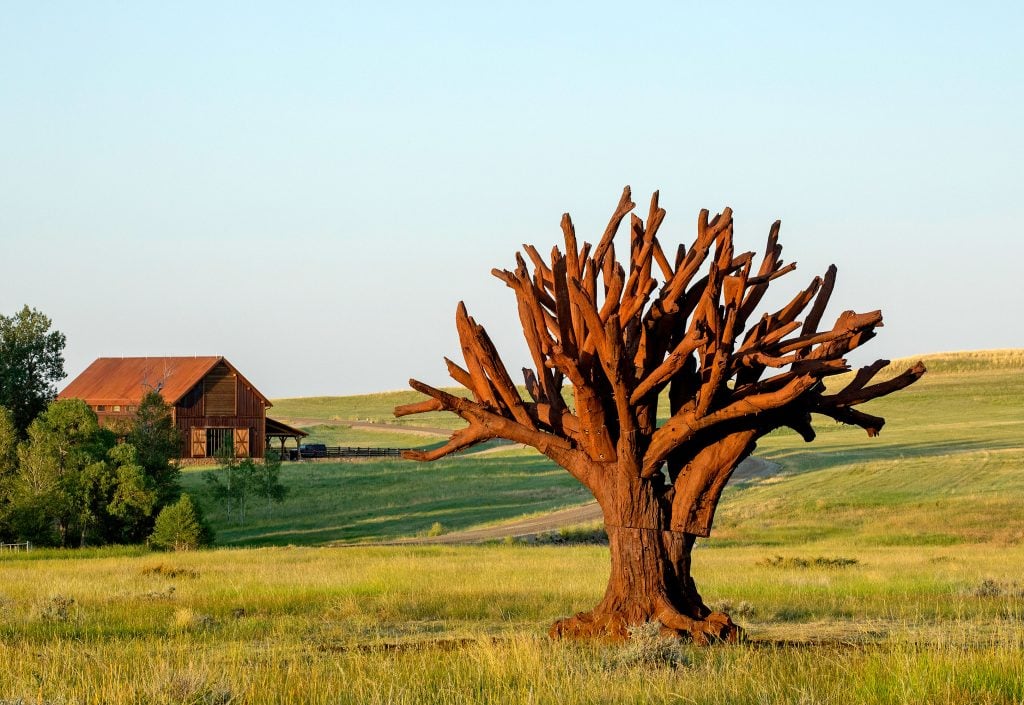
Ai Weiwei, Iron Tree (2013). Photo: James Florio. Courtesy of Tippet Rise.
This is Tippet Rise Art Center, where each summer the philanthropists Cathy and Peter Halstead host a five-week cultural program that combines art and music in about as majestic a setting as exists on earth. The couple purchased the property—still a working cattle and sheep ranch—in 2010 and opened Tippet Rise in 2016. They were drawn to the location, they said, for its “strange and visceral” qualities at the foot of the aptly named Beartooth Mountains, which dominate every panoramic vista. Where better to site a motley crew of modern and contemporary sculptures than this otherworldly slice of Big Sky Country, where the northern Great Plains shape-shift into the Rockies?
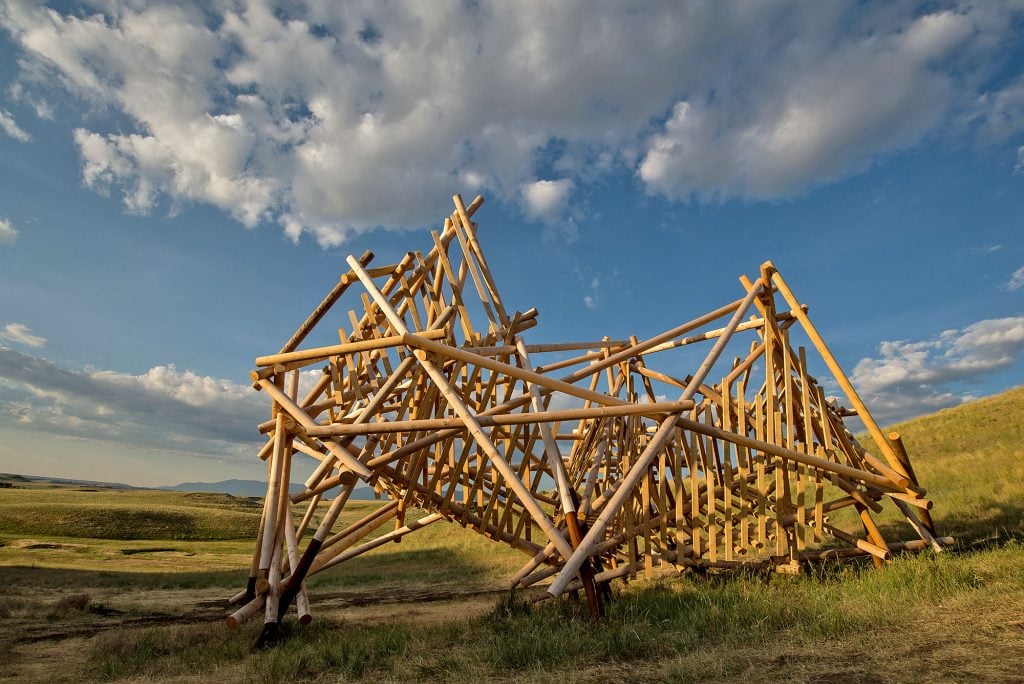
Stephen Talasnik, Satellite #5: Pioneer (2016). Photo: Erik Petersen. Courtesy of Tippet Rise.
By area, Tippet Rise is among the largest sculpture parks in the world, spanning 12,500 acres. Fifteen miles of trails connect more than 20 artworks, which appear to loaf about the landscape—if at a glacial pace. Imagine the surprise to unwitting hikers and cyclists who stumble upon these giants. Although, because the public is invited to explore the property (with a reservation), they are typically witting.
These megaliths, rather than mimicking their natural surroundings, are a response to it. “Once you come to the American West, you think about land in a different way. For us, the art is something that was born here already,” said Cathy, an abstract painter (and a trustee of her father Sidney Frank’s foundation to support the arts). “It was the sense that they had sprung out of the earth like primal, autochthonous relics,” explained Peter, who is a published poet (and a trustee of the Adrian Brinkerhoff Poetry Foundation). “We wanted something Druidical,” he added, using the parlance of mystics. “We wanted Stonehenge.”
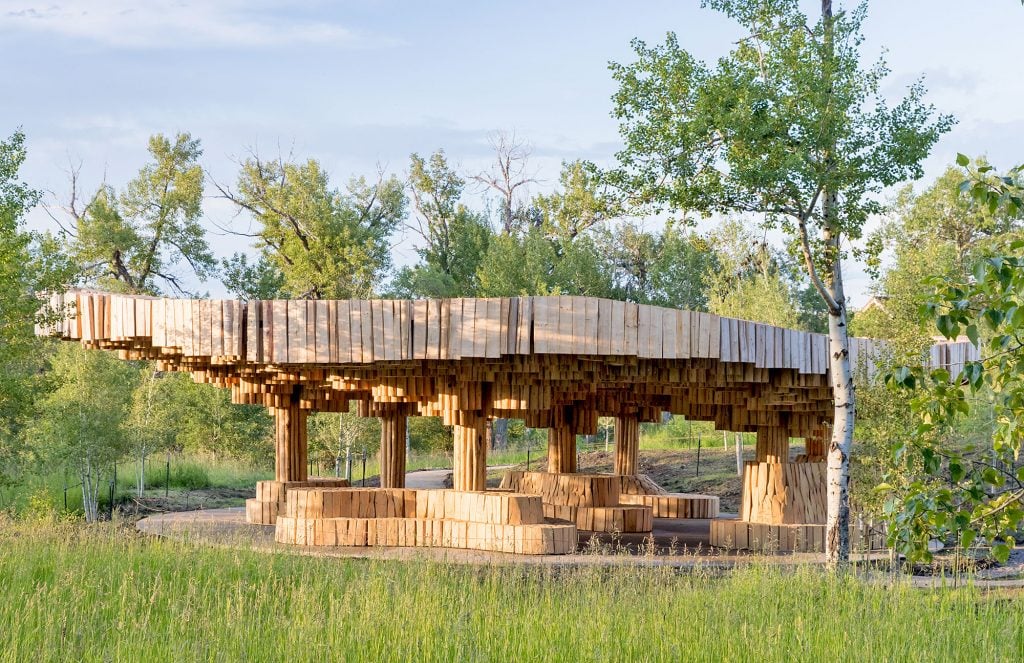
Francis Kere, Xylem (2019). Photo: Iwan Baan. Courtesy of Tippet Rise.
The result is a head-spinning expanse of colossal creations, each one inviting discovery as they peer down from mesas or burrow into canyons. Nearest the performance hall is Xylem (2019) by Francis Kéré, the Burkinabé-German architect who won last year’s Pritzker Prize for architecture, the first person from Africa to do so. To create the permanent wood pavilion, Kéré was inspired by the traditional togunas of his native Mali. “He told us that in his community, people would gather in the shade under big trees,” said Pete Hinmon—co-director of Tippet Rise along with his wife, Lindsey Hinmon—on a tour of the sculptures. “That is where the town meetings would happen, where disputes were settled, and where he got married.” The Halsteads discovered Kéré’s work when they saw an installation of his at the Louisiana Museum of Modern Art in Humlebæk, Denmark, in which he tightly bundled eucalyptus leaves to create seated canopies.
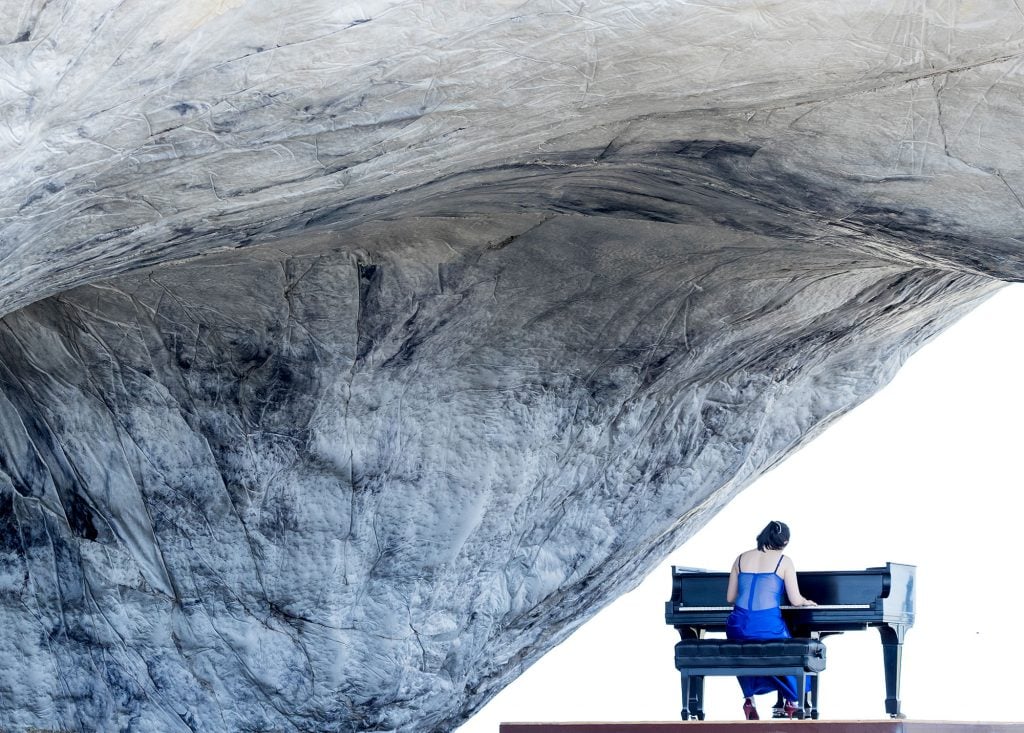
Ensamble Studio, Domo (2016) with a performer. Photo: Iwan Baan. Courtesy of Tippet Rise.
Across the park, another gathering spot beckons: Domo (2016), a stage-like sculpture by the Spanish architecture firm Ensamble Studio. Inspired in part by the famed duomos of Italy, Domo was envisioned as a kind of al fresco cathedral. On occasion, a visiting musician will perform inside of it, the musical strains resonating through its concrete walls for a richly cavernous sound. The duo behind Ensamble Studio are Antón García-Abril and Débora Mesa, who were shortlisted to design the Metropolitan Museum of New York’s new modern and contemporary art wing. They also constructed two other monumental works at Tippet Rise, Beartooth Portal (2015) and Inverted Portal (2016), massive concrete outcroppings popular among visitors, as well as animals seeking respite from the punishing summer sun.
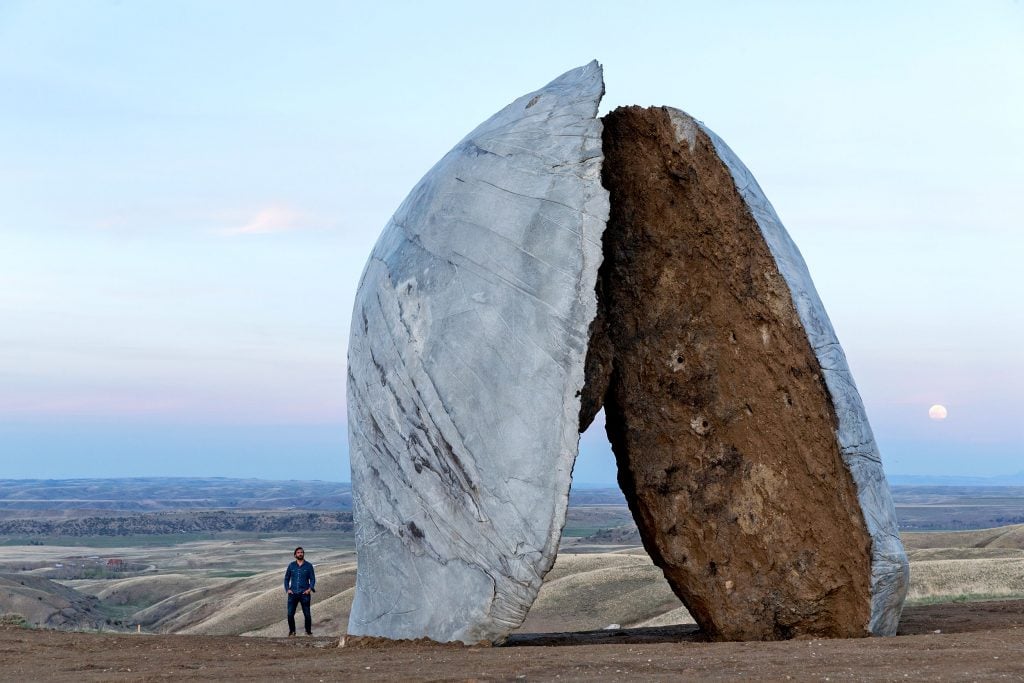
Ensamble Studio, Beartooth Portal (2015). Photo: Iwan Baan. Courtesy of Tippet Rise.
For site-specific works such as these, artists are invited to visit Tippet Rise to scout out locations before breaking ground. Usually those artists personally partake in the installations, too. Such was the case with Beethoven’s Quartet (2003), a towering sculpture by Mark di Suvero with a steel pendulum resembling a musical note. The octogenarian artist—and classical music aficionado—handled the crane himself. “He said the crane was like an extension of his body,” explained Pete Hinmon, who oversees the more complex installations, “because he could use it to bend the steel, lift it, and put it all together.” The artist was exacting about the position of the work, so that when visitors struck its pendulum with a provided rubber mallet, the resulting gong would echo almost endlessly through the rolling hills.
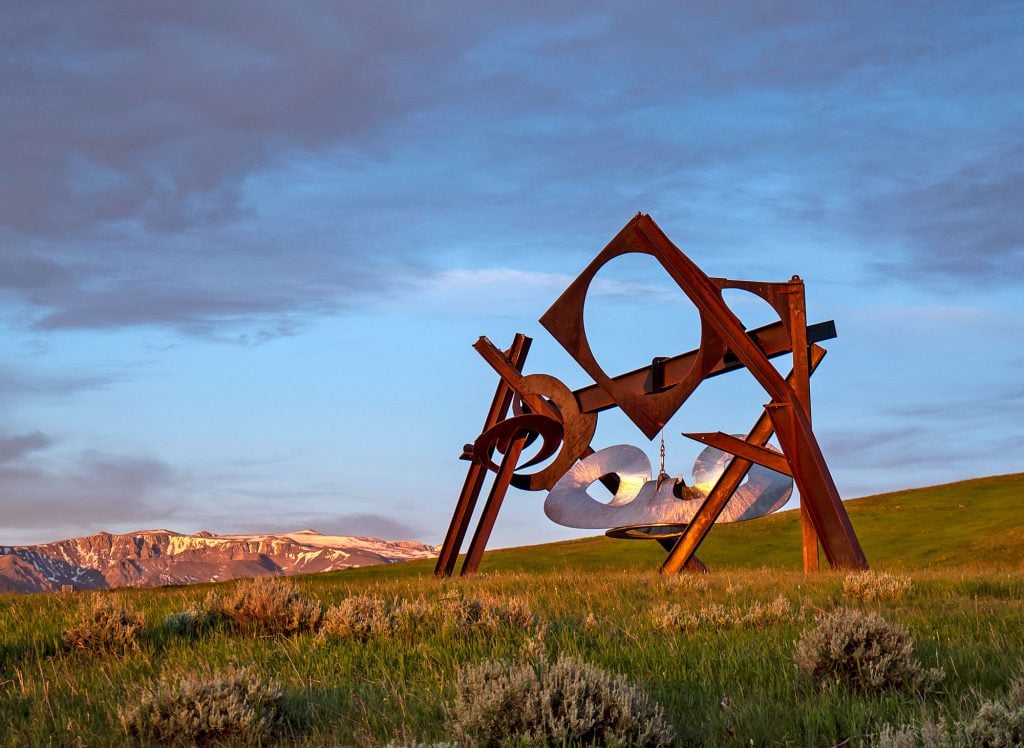
Mark di Suvero, Beethoven’s Quartet (2003). Photo: Erik Petersen. Courtesy of Tippet Rise.
For his part, Stephen Talasnik—the artist of those two wall sculptures in the music venue—found the perfect crater-like spot for his Pioneer (2016) cedar wood sculpture, inspired by the 1973 space satellite of the same name. It is the only sculpture on the premises that is not on a flat surface, a nod to his vertical hometown of New York City.
The environmental artist Patrick Dougherty built Daydreams (2016) as a replica of a frontier schoolhouse, from which masses of willow branches (found onsite) swirl, representing children’s boundless imagination. The whimsical idea came about when the artist toured the property with Peter and Cathy and happened upon a long-abandoned one-room schoolhouse. In 2022, he added another branch-based work, Cursive Takes a Holiday, in reference to children’s long-awaited summer break.
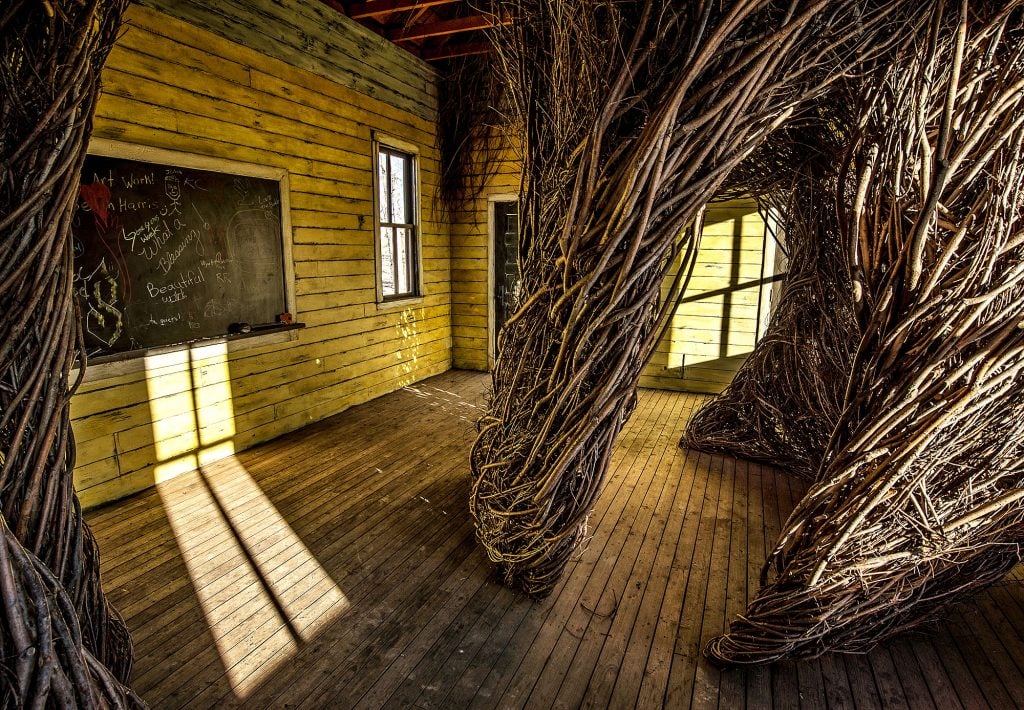
Patrick Dougherty, Daydreams (2016). Photo: Erik Petersen. Courtesy of Tippet Rise.
On the opening weekend of the 2023 season, the Halsteads were especially keen to talk about two newly installed arrivals: a three-part sculpture by Louise Nevelson called Trilogy (1978)—evoking a family of bison, which no longer roam these parts—and a soaring red steel sculpture by Alexander Liberman, Archway II (1984/2016). That both artists were born in present-day Ukraine was meaningful to the Halsteads.
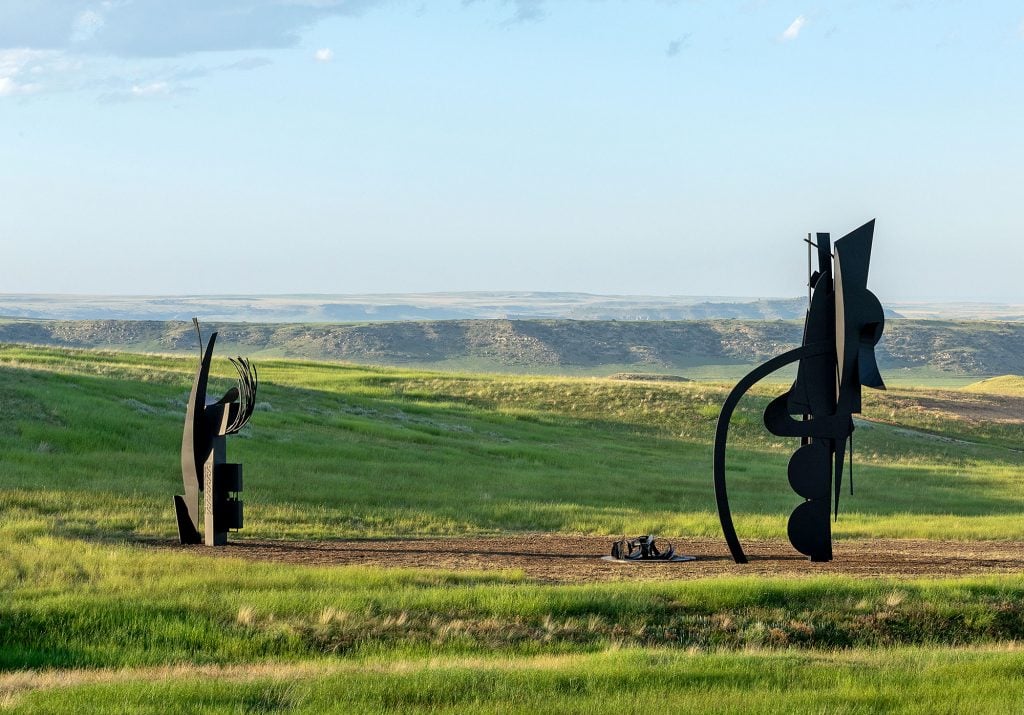
Louise Nevelson, Trilogy (1978). Photo: James Florio. Courtesy of Tippet Rise.
Recalling the Liberman acquisition, Peter remembered hosting a concert of woodwind musicians at Storm King, the sculpture park in New York’s Hudson Valley (and partial inspiration for Tippet Rise, along with TICKON in Denmark), in the shadow of a sister work by Liberman. “A representative of his came up to us and said, ‘I happen to know where there’s one final Liberman sculpture. It’s in a barn, taken apart, a little bit neglected.’ So it really came to us through the ghost of Liberman at Storm King.” Hinmon likened the expert restoration and painstaking reassembly at Tippet Rise to an adult puzzle.
The Halsteads had long been familiar with Liberman’s unusual path to sculpture, which he found later in life after a storied career as the art director of Vogue in the 1940s and 50s, and then as the editorial director of Condé Nast from 1960 into the 1990s. He’s credited with being the first to fold the rarefied world of art into the pages of a fashion magazine. “You’d be looking at a dress and all of a sudden there’d be an article about Joan Miró,” said Peter. “That was Liberman’s doing.” In one of his most celebrated spreads, in a 1951 issue of Vogue, Liberman recruited Cecil Beaton to photograph a model against the background of a massive Jackson Pollock drip painting.
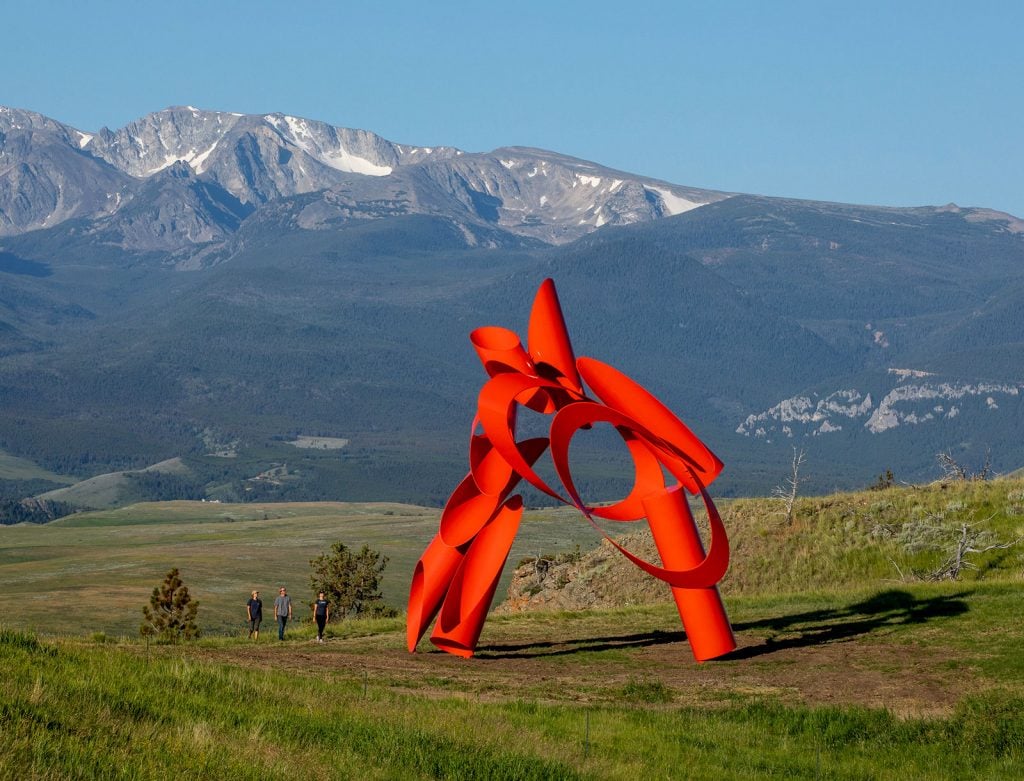
Alexander Liberman, Archway II (1984/2016). Photo: James Florio. Courtesy of Tippet Rise.
The Tippet Rise sculpture park is constantly growing. Soon after opening weekend came the announcement that it had just received a gift, Richard Serra’s Crossroads II (1990), composed of four mammoth plates of Core-Ten steel. Only weeks earlier, Tippet Rise acquired The Soil You See…(2023) by Indigenous artist Wendy Red Star, a native of Billings, Montana. The work, reminiscent of a fingerprint, was originally commissioned by Monument Lab as a part of an exhibition at the National Mall in Washington D.C. Both works will be installed in time for next summer’s concert season.
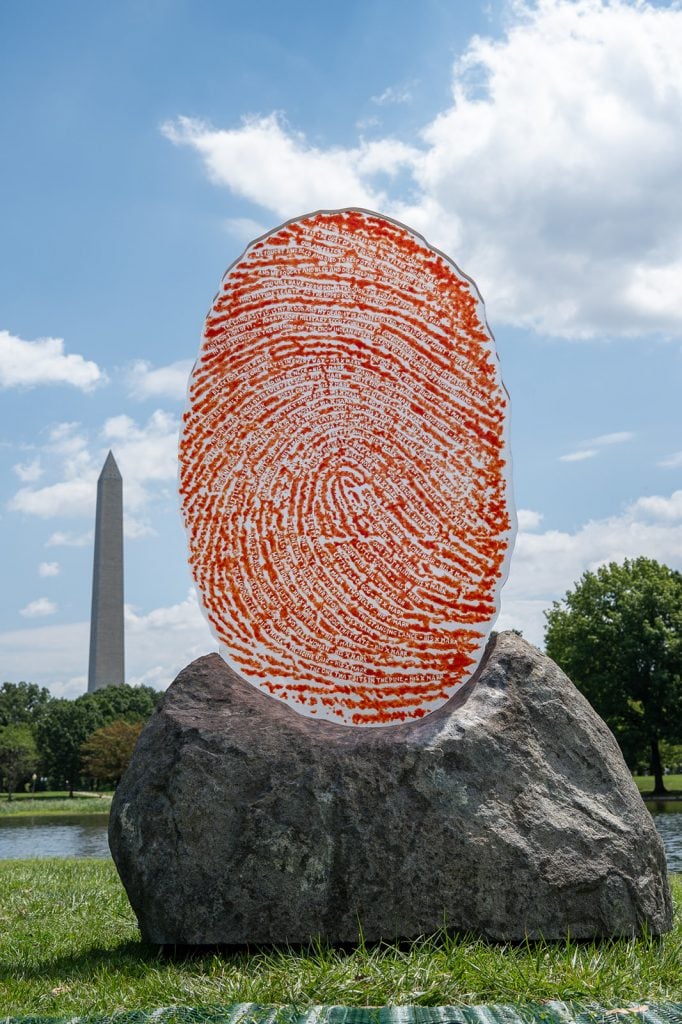
Wendy Red Star, The Soil You See… (2023) in the Monument Lab’s exhibition “Beyond Granite: Pulling Together” on the National Mall in Washington, D.C. Photo by AJ Mitchell, courtesy of Monument Lab.
Asked which other artists’ works might make their way to Tippet Rise in the future, Cathy explained that they have some names they’re interested in and they’ve already reached out to them. Ultimately, she said, “I think it depends which works we can envision here, that would feel right here, and would bring a conversation to the land, the sky, the incredible sunsets. You know, the land communicates with you the minute you step on it. The possibilities present themselves.” Peter, on the other hand, jumped at the question. “The guy who did Stonehenge!” he laughed. “When we find him, he’s coming here.”





